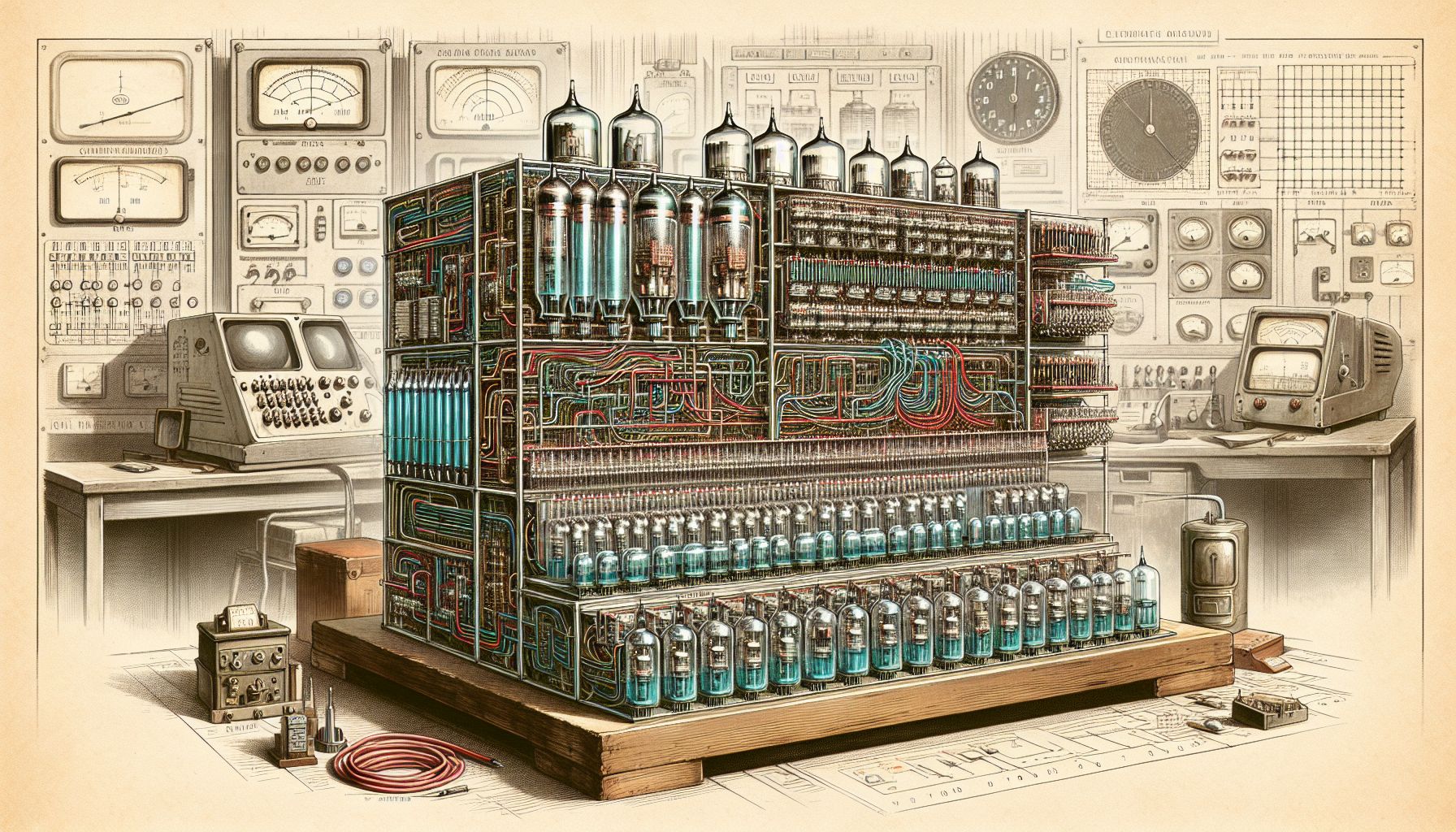📌 Let’s explore the topic in depth and see what insights we can uncover.
⚡ “Long before you could hold a supercomputer in your pocket, there was the ENIAC that took up an entire room. Step into 1945, where this colossal machine began writing the narrative of our digital era.”
In the annals of technological breakthroughs, the ENIAC (Electronic Numerical Integrator and Computer) holds a unique place. 📌 In fact, the first general-purpose electronic digital computer, developed in 1945, which laid the foundation for the modern computer era. This pioneering machine was the forebear of the digital age, providing the blueprint for the countless computing devices that followed. In this blog post, we will take a deep dive into the world of ENIAC, exploring its history, design, functionality, and the impact it had on the development of technology. Understanding the ENIAC and its role in shaping the future is a fascinating journey that not only illuminates the evolution of technology but also helps us appreciate the incredible technological wonders we have today. Whether you’re a computer enthusiast, history buff, or merely a curious soul, this exploration will provide a compelling insight into the birth of the digital revolution. So, let’s rewind the clock to 1945 and step into the world of the ENIAC.
🕰️ The Birth of ENIAC

"ENIAC: The Dawn of Digital Computing Era, 1945"
Born out of necessity during the height of World War II, the ENIAC was conceived to solve a pressing problem. The U.S. Army needed a machine that could calculate artillery firing tables faster than human computers. The task was given to John Mauchly and J. Presper Eckert at the University of Pennsylvania’s Moore School of Electrical Engineering. The duo, with a team of engineers, worked tirelessly to create a machine that was unlike anything the world had seen. The result was the ENIAC, a behemoth that weighed 30 tons, took up 1800 square feet of space, and contained 17,468 vacuum tubes. But its size was justified by its power. The ENIAC could perform 5,000 additions, 357 multiplications, or 38 divisions in a second—lightning speed at that time.
📐 The Design and Functioning of ENIAC
The ENIAC was an extraordinary machine, not just in terms of size, but also in its design and functionality. It was a decimal (not binary) computer and used ten-position ring counters to store digits. It employed punched-card input and output devices, which were common at the time. Unlike modern computers, which use stored programs, the ENIAC was programmed by setting a series of switches and dials. Changing a program required rewiring the machine, a task that could take weeks. However, it was a monumental leap from the mechanical calculators of the era, offering a level of speed and complexity that was unparalleled.
🚀 The Impact of the ENIAC
The ENIAC represented a turning point in the development of computer technology. Its creation demonstrated the feasibility of large scale digital computers and paved the way for future computer development.
Speed
The ENIAC was phenomenally faster than existing computational methods. It could complete tasks in mere seconds that would take a human computer hours or even days to complete.
Versatility
Despite its complex programming, the ENIAC was a general-purpose computer. It was used for a variety of tasks, ranging from military calculations to scientific research.
Inspiration for future developments
The work on the ENIAC led directly to the development of the EDVAC (Electronic Discrete Variable Automatic Computer), the first stored-program computer. The lessons learned from the ENIAC were instrumental in shaping the designs of future computers.
🤔 The Controversies Surrounding the ENIAC
The history of the ENIAC is not without its share of controversies. There has been debate over who deserves credit for the invention of the digital computer. While Mauchly and Eckert were undeniably the creators of the ENIAC, some argue that the concept of a digital computer was first proposed by mathematician John Atanasoff. Additionally, the role of women in the ENIAC project is often overlooked. Six women, known as the “ENIAC Girls”, were the primary operators of the machine. These women—Kathleen McNulty, Jean Jennings, Betty Snyder, Marlyn Wescoff, Fran Bilas, and Ruth Lichterman—were responsible for the programming and operation of the ENIAC, yet their contributions were largely unrecognized until decades later.
🧭 Conclusion
The ENIAC, as the first general-purpose electronic digital computer, was a marvel of its time. It was a testament to human ingenuity and the desire to push the boundaries of what was thought possible. The invention of the ENIAC marked the dawn of the digital age, setting the stage for the rapid evolution of computer technology that has transformed our world. As we marvel at the sleek, powerful devices that fit in the palm of our hands today, let’s take a moment to appreciate the ENIAC. This colossal, room-filling machine, with its labyrinth of cables and flickering vacuum tubes, was the giant upon whose shoulders our modern digital world stands. It’s a testament to how far we’ve come, and a reminder of the limitless possibilities of human innovation. After all, as the saying goes, “we’ve come a long way, baby!”
🤖 Stay tuned as we decode the future of innovation!
